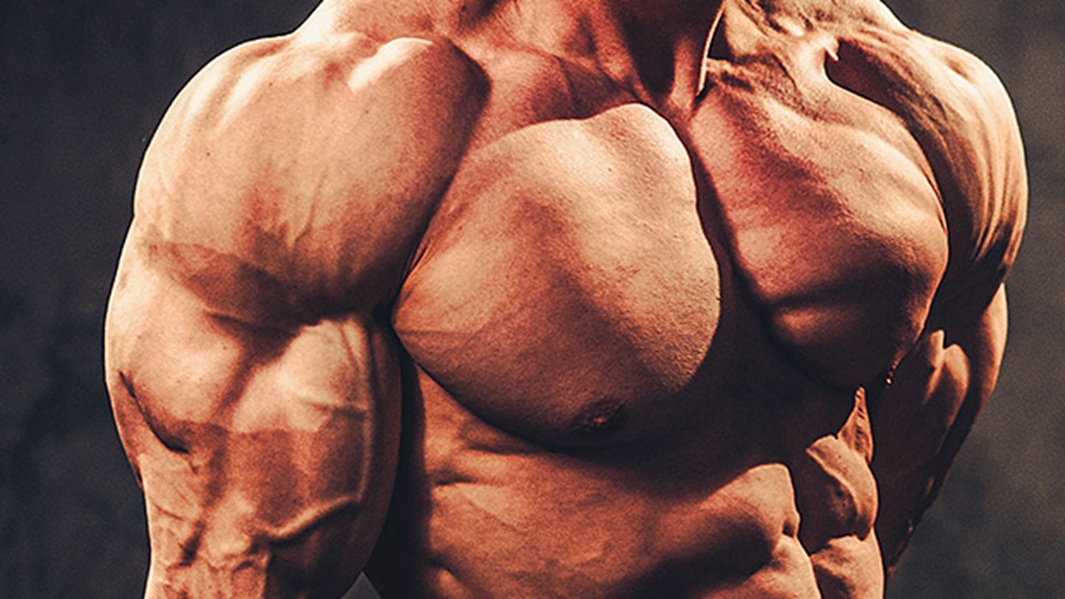How Do Bodybuilders Train Shoulders? Build Size, Strength, and Symmetry
Whether you’re a beginner lifter or a seasoned bodybuilder, shoulder development plays a vital role in creating that sought-after V-taper physique.
Strong, capped deltoids not only enhance aesthetics but also improve strength performance in pressing movements and reduce injury risk.
In this guide, we’ll explore the anatomy of the deltoid, scientific principles of shoulder hypertrophy, effective training strategies, and a proven shoulder workout plan—all optimized for serious muscle-building results.
🔍 Understanding Shoulder Anatomy: The Foundation of Smart Training
Before you jump into overhead presses and lateral raises, it’s important to understand what you’re actually training.
The shoulder is primarily made up of the deltoid muscle, which has three distinct heads:
- Anterior (front) deltoid: Responsible for shoulder flexion and pressing movements (like bench presses and front raises).
- Lateral (middle) deltoid: The key to width and the iconic “capped” shoulder look; responsible for shoulder abduction (raising your arms to the side).
- Posterior (rear) deltoid: Supports pulling motions and improves posture and rear symmetry.
To fully develop your shoulders, you need to train all three heads, using a combination of compound lifts and isolation exercises.
📚 Scientific Insights: How Shoulders Grow
Training Frequency and Volume
A 2019 study published in Frontiers in Physiology highlighted that muscles respond well to being trained twice per week, particularly when volume is properly managed.
For the shoulders, this means splitting your training volume across 2–3 weekly sessions to allow recovery and maximize hypertrophy.
- Optimal frequency: 2–3 times per week
- Effective volume: ~12–20 sets/week (distributed across all three heads)
Fiber Type Composition
Deltoid muscles are made up of a roughly equal mix of fast- and slow-twitch fibers. This means they respond well to both heavy compound lifts (6–10 reps) and higher-rep isolation work (12–20 reps).
Mechanical Tension + Metabolic Stress = Growth
Heavy pressing creates mechanical tension, while lateral and rear delt raises induce metabolic stress due to lighter loads and higher time-under-tension. Combining both is key to maximizing shoulder size.
🏋️ Training Strategies for Maximum Shoulder Growth
To get the most out of your shoulder workouts, apply these principles:
Prioritize the Lateral Delts
While front delts are heavily involved in pressing (like bench press and overhead press), the lateral delts are undertrained in many routines. Yet, they are responsible for that round, 3D shoulder look.
➡️ Train them with lateral raises, upright rows, and machine laterals.
Hit Rear Delts With Precision
Rear delts are often forgotten and can become underdeveloped, leading to poor posture and imbalances.
➡️ Include face pulls, reverse pec deck, and rear delt rows regularly.
Use a Variety of Angles and Tools
Free weights, cables, and machines all have a place in your shoulder training arsenal.
- Dumbbells allow a natural range of motion.
- Cables maintain constant tension.
- Machines isolate well and reduce injury risk late in the session.
Pre-Exhaust or Post-Exhaust Strategically
- Start with isolation if you want to ensure lagging heads get hit hard before fatigue sets in.
- Finish with burnout sets or dropsets to create maximal pump and metabolic fatigue.
💪 3D Shoulder Workout for Bodybuilders (Two Options)
Here are two training splits you can implement based on your current routine:
📅 Option A: Shoulder-Dedicated Day (Bro Split Style)
Best for: Bodybuilders who follow a 5–6 day split and want to specialize shoulder growth.
Duration: 60–75 minutes
Frequency: 1–2x/week
Seated Overhead Barbell Press – 4 sets of 6–10
Focus on controlled eccentric. Drive up with power.
Dumbbell Lateral Raises – 4 sets of 12–15
Keep arms slightly bent; pause at the top.
Rear Delt Cable Flyes – 4 sets of 15–20
Use lighter weight for strict form and maximum contraction.
Arnold Press – 3 sets of 10–12
Incorporates both front and side delts with a dynamic range.
Machine Lateral Raise Dropset – 3 sets to failure
Start heavy, drop weight twice, no rest.
Face Pulls (Rope Cable) – 3 sets of 15–20
Excellent for rear delts and shoulder health.
📅 Option B: Push Day Shoulder Focus (Push/Pull/Legs)
Best for: Lifters on a 4–5 day Push/Pull/Legs routine who hit shoulders multiple times a week.
Day 1: Push A (Heavy Press Focus)
- Overhead Dumbbell Press – 4×6–8
- Incline Barbell Bench Press – 4×6
- Lateral Raises – 3×15
- Triceps Dips – 3×10
Day 2: Push B (Volume and Isolation)
- Arnold Press – 3×10
- Cable Lateral Raise (single arm) – 4×12
- Reverse Pec Deck – 4×15
- Overhead Cable Triceps Extensions – 3×12
This setup ensures the deltoids are stimulated 2–3 times per week with sufficient volume and variety.
🛠️ Exercise Library: Must-Have Shoulder Builders
🚀 Compound Lifts:
- Seated or Standing Overhead Press
- Dumbbell Shoulder Press
- Push Press
- Landmine Press
🔄 Isolation (Lateral Head):
- Dumbbell Lateral Raise
- Cable Lateral Raise
- Machine Laterals
- Upright Row (EZ-bar or cables)
🔙 Isolation (Rear Head):
- Face Pulls
- Reverse Pec Deck
- Bent-Over Reverse Flyes
- Rear Delt Row (wide grip)
⏫ Isolation (Front Head):
- Front Raises (plate, dumbbell, cable)
- Incline Front Raise (slight incline bench)
Note: Front delts often get enough work from chest presses—most lifters can minimize extra front delt work unless it’s a weak point.
🧬 Injury Prevention and Mobility Tips
The shoulder joint is one of the most mobile—and most unstable—in the human body. Here’s how to keep it strong and pain-free:
✅ Warm-Up Routines:
- Band pull-aparts: 2×15
- Arm circles and shoulder dislocates: 1–2 mins
- Light overhead pressing with an empty bar
✅ Include Rotator Cuff Work:
- Internal/external rotation with bands or cables
- Prone Y-raises
✅ Don’t Overload Poor Form:
Shoulder impingement and rotator cuff strains often come from poor technique, excessive momentum, or neglecting mobility.
🍽️ Nutrition for Shoulder Growth
Muscle won’t grow without proper fuel. Here are key tips:
- Protein: Aim for 0.8–1.0g/lb of bodyweight per day
- Carbs: Support training volume with complex carbs (oats, rice, potatoes)
- Fats: Include healthy fats to support hormones (avocado, nuts, eggs)
➡️ Focus on nutrient timing: Consume 20–30g of high-quality protein within 1 hour post-workout to support muscle protein synthesis.
⚖️ Common Shoulder Training Mistakes to Avoid
- Neglecting Rear Delts: Leads to imbalances and injury risk.
- Using Momentum: Especially in lateral raises—strict form matters.
- Overtraining Front Delts: Bench pressing already hits them hard.
- Poor Recovery: Shoulders need rest and mobility to function pain-free.
- Imbalanced Volume: Equal attention to all three deltoid heads is essential.
📈 Tracking Progress and Making Gains
Use the following to measure growth and progress:
- Photos: Shoulder shape changes can be subtle—visual checks help.
- Measurements: Measure shoulder circumference monthly.
- Strength: Increases in pressing movements often reflect hypertrophy.
- Volume Progression: Gradually increase reps, weight, or sets over time.
🧠 Final Takeaway: Train Smarter, Not Just Harder
To build big, round, powerful shoulders, you don’t need endless pressing. What you need is strategic volume, targeted isolation, and smart recovery. Prioritize form, recover well, and feed your muscles—and you’ll not only look more muscular but perform better across all your lifts.
Ready to level up your delts? Stick to the plan, keep lifting with intent, and your shoulder gains will show—front, side, and back.





